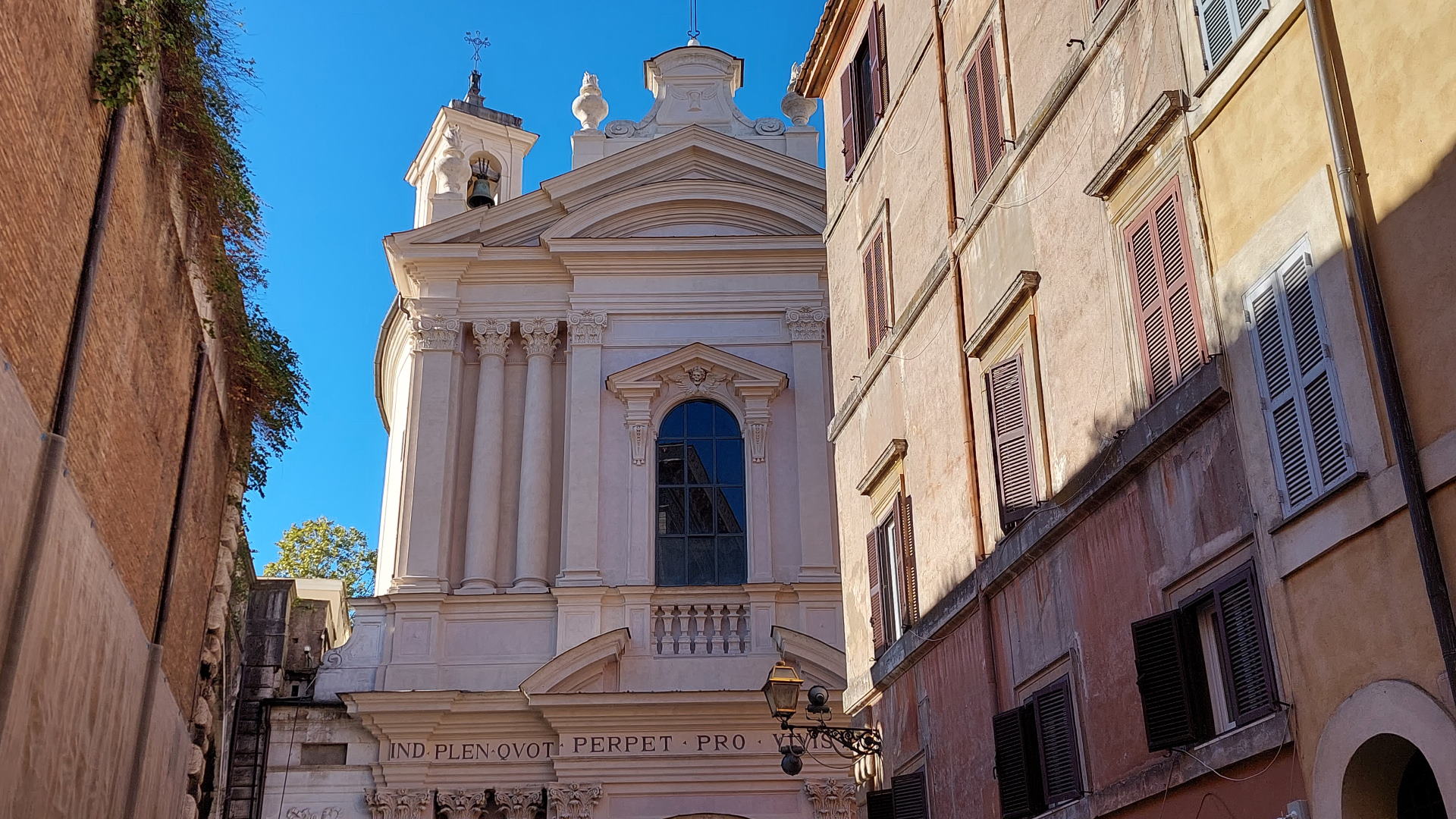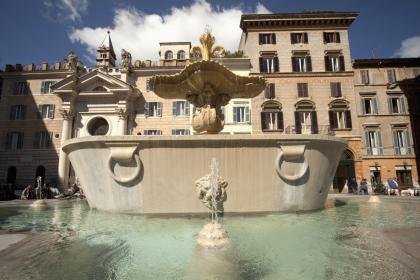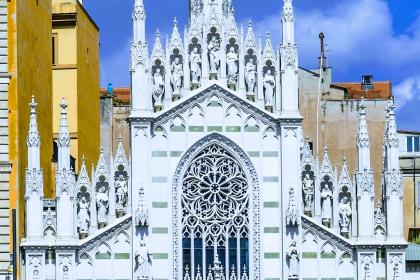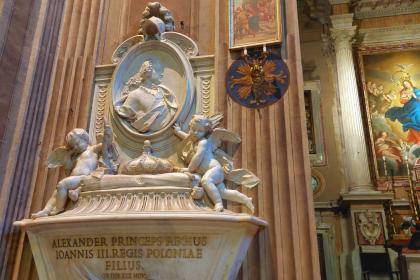
Located in the Rione Regola, along the elegant Via Giulia, the church was built in the 16th century by the Compagnia dell’Orazione e della Morte. It stands on an ancient cemetery dedicated to the Christian burial of abandoned corpses.
Rebuilt in the first half of the 18th century on a project by the architect Ferdinando Fuga, it is a monument to the cult of death. Two graffiti plaques stand out on the 18th-century façade: one depicts a winged skeleton with the inscription Hodie mihi, cras tibi, that is to say, My turn today, yours tomorrow; in the other is the death, sitting and holding a winged hourglass in hand, that watches a dying man.
The main entrance is surmounted by a semi-circular tympanum, inside which an hourglass recalls the fleetingness of time, and is decorated with festoons, pilasters, skulls and macabre symbols.
An oval dome covers the extremely suggestive interior. The oval-shaped plan has a series of columns and two chapels on each side and is characterized by a succession of concave and convex shapes. Among the splendid decorations are the frescoes by Giovanni Lanfranco with the figures of hermits - Sant'Antonio Abate, San Paolo di Tebe and San Simeone Stilita - previously in the Romitorio of Cardinal Farnese, and the magnificent 17th-century altarpiece depicting Jesus on the cross of the main altar, the work of Ciro Ferri.
In the underground of the church, the crypt is what remains of the ancient cemetery of the Archconfraternity. Largely destroyed to build the Tiber walls, it received more than 8 thousand abandoned bodies found in the river or in the countryside until the 19th century. Today, you can see bones and skeletons creating artistic decorations - crosses, sculptures and chandeliers - and numerous skulls, some with the year and the cause of death and the place of discovery engraved on the forehead.
Rione VII - Regola

Museo delle Anime del Purgatorio

 Condividi
Condividi
The Church of Santa Maria della Concezione of the Capuchins

 Condividi
Condividi
Information
Open by appointment only
For the visits please contact the Amici del Tevere association
 Condividi
Condividi
Location
To find out about all accessibility services, visit the Rome accessible section.











































